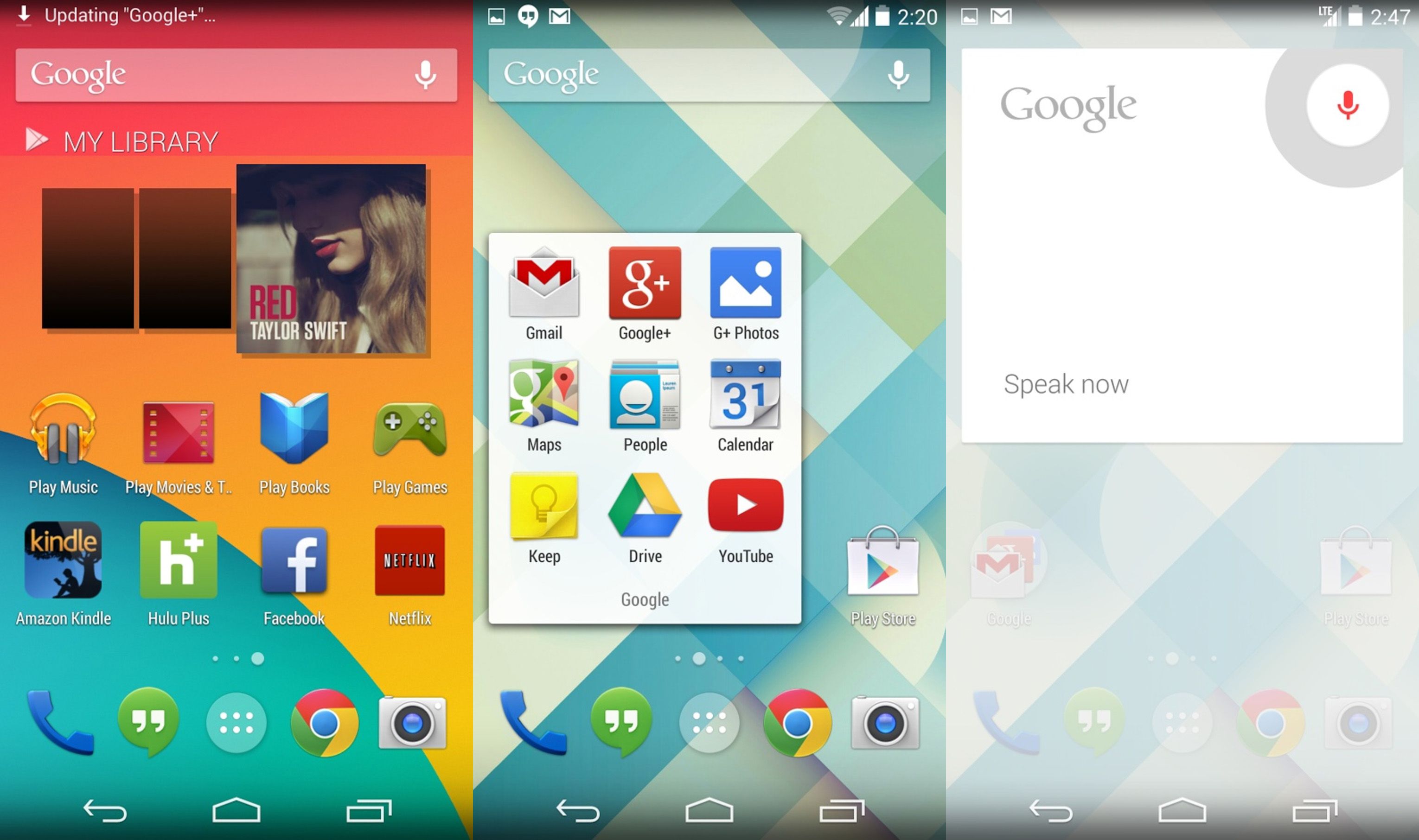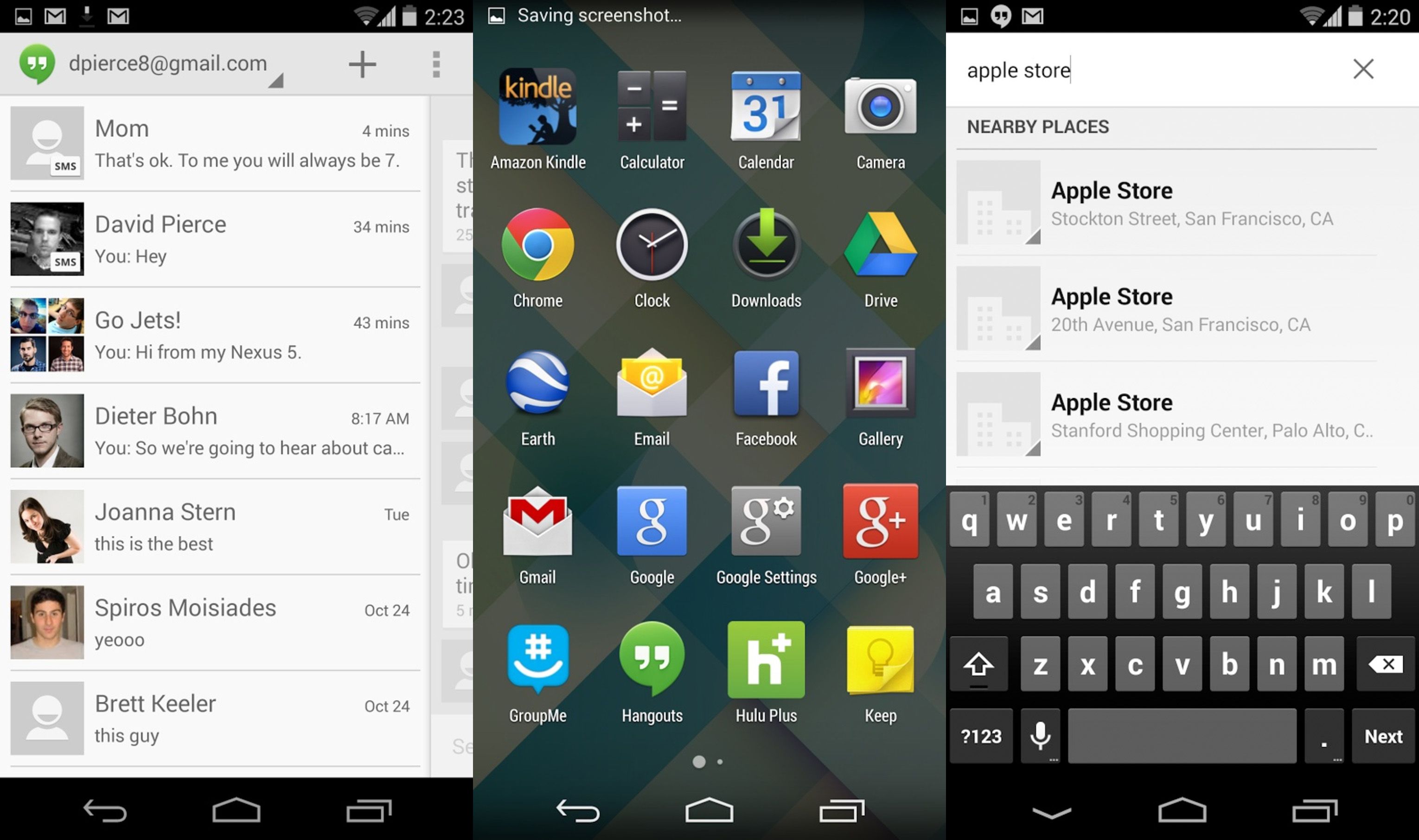Following the latest kerfuffle from Google and its delay in releasing the Nexus 5 and newest version of Android, they’ve finally ended up revealing both of them unexpectedly. Android 4.4 Kit Kat has arrived, at first exclusively for the new device, while users of the Nexus 4, 7, 10, Samsung Galaxy S4, and HTC One Google Play Edition will receive it over the next few weeks. These are some of the features of the most recent version of the Google operating system.
At the design level, the interface has been given a facelift, simplifying its lines with minimalist user instructions similar to those of the controversial iOS 7 from Apple. The black notification bars have disappeared, as well as the lower buttons, to make way for shaded transparent ones in the background that will now in many cases disappear when you run apps in full-screen mode. The continuity break that began with Ice Cream Sandwich also continues its evolution, with the green, grey, and blue swapped for various shades of white.
Google’s various services are now much more integrated with the system. In fact, Google Now will be permanently visible on the desktop if you swipe left on the home screen. In addition, to do an “Ok, Google” command you no longer have to press the mic button, since the sound system will be permanently activated. Other brand services like Hangouts have also received new emphasis, with Hangouts now set as the default SMS and MMS application and maintaining its place as the unified instant messaging client for Google products.

New programs from the Google ecosystem now come installed with the operating system by default, such as the office IT suite QuickOffice, which is now much more integrated with the rest of the software. The appointment book has also improved, now including a local business search function, an integrated Google search-like tool inside the contacts book, and the ability to organize your contacts by type of interaction with each of them.
The interface can also better handle external files, with the “Downloads” application totally revamped and backed up by “The File Picker,” the tool for tagging file types. All of this architecture can be integrated with the best-known cloud storage services such as Drive or Dropbox.

Best of all is that all these new features have had no affect on the size and capacity of the operating system, with the memory management having improved to the extent that this version 4.4 can run on devices with only 512MB of RAM. In addition, it offers new resources for developers so that they can allow their apps to run in low-power mode in order to use less memory and battery. Another thing is that all of the performance upgrades will only be available if smartphone manufacturers themselves make a concurrent update to their devices. Unfortunately, the most humble smartphones are the ones most likely to take longest in being upgraded… if they ever do at all.
There are loads more novelties —such as the option to video— record what is happening your phone’s screen thanks to tools included in the SDK, improvements in Bluetooth connectivity and support for infrared sensors, a smart Caller ID, and battery use optimized using the phone sensor’s feedback. Android 4.4 Kit Kat definitely maintains the Software Status Quo but it is an improvement upon its predecessor in almost possible aspect.
Images courtesy of The Verge






[…] few days ago, Google gave a sneak peek at some the features of the new version of its Android operating system, with one of them being an […]
[…] updates to the operating system. This means that soon, for example, you’ll be able to install Android 4.4 Kit Kat on a Galaxy Nexus, when otherwise that model would never receive an official version of the […]